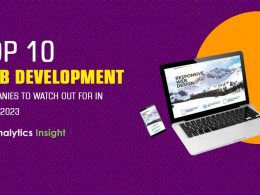Stay ahead of the curve and discover the top 10 business intelligence trends shaping the future
In today’s data-driven world, businesses must harness the power of information to gain a competitive edge. Business intelligence (BI) is crucial in helping organizations make informed decisions based on data insights. To stay ahead of the curve, knowing the latest trends and advancements in business intelligence is essential. In this article, we will explore the top 10 business intelligence trends revolutionizing how companies analyze and utilize data. From augmented analytics to AI-powered insights, these trends are shaping the future of BI and driving innovation across industries.
1. Augmented Analytics:
Augmented analytics combines artificial intelligence (AI) and machine learning (ML) techniques to automate data preparation, insights generation, and visualization. It empowers business users to access and understand complex data without technical expertise, enabling faster and more accurate decision-making.
2. Self-Service BI:
Self-service BI allows business users to access and analyze data independently, reducing reliance on IT departments for reporting and analysis. With user-friendly interfaces and intuitive tools, self-service BI empowers employees at all levels to make data-driven decisions, fostering a culture of data literacy within organizations.
3. AI-powered Insights:
AI transforms how businesses analyze data by automating insights generation and uncovering patterns and trends humans may miss. AI-powered insights provide real-time recommendations, predictions, and anomaly detection, enabling proactive decision-making and improving overall business performance.
4. Data Democratization:
Data democratization involves making data accessible to all employees, regardless of their technical skills or job roles. Organizations foster a data-driven culture by democratizing data and empowering employees to leverage data for decision-making and innovation.
5. Cloud-Based BI:
Cloud-based BI solutions offer flexibility, scalability, and cost-effectiveness, making it easier for organizations to store, manage, and analyze large volumes of data. Cloud-based BI platforms provide real-time access to data, enabling users to make informed decisions from anywhere, at any time.
6. Natural Language Processing (NLP):
NLP enables users to interact with BI systems using natural language commands, making data analysis and querying more intuitive and user-friendly. NLP eliminates the need for complex queries or coding, allowing users to ask questions and receive instant insights in plain language.
7. Data Visualization:
Data visualization tools enable users to represent complex data in a visually appealing and easily understandable format. Interactive dashboards, charts, and graphs facilitate data exploration and communication, empowering users to extract meaningful insights from data at a glance.
8. Predictive Analytics:
Predictive analytics leverages historical data and statistical algorithms to predict future outcomes. Organizations can anticipate customer behavior, identify risks, and optimize business processes by analyzing patterns and trends for better decision-making and improved outcomes.
9. Real-Time Analytics:
Real-time analytics enables organizations to analyze data as it is generated, providing up-to-the-minute insights. By leveraging technologies like in-memory computing and streaming analytics, businesses can respond quickly to changing market conditions, detect anomalies, and make timely decisions.
10. Data Privacy and Security:
Data privacy and security are paramount with increasing volume and importance. Organizations must implement robust security measures, comply with data protection regulations, and establish a data governance framework to safeguard sensitive information and maintain customer trust.







